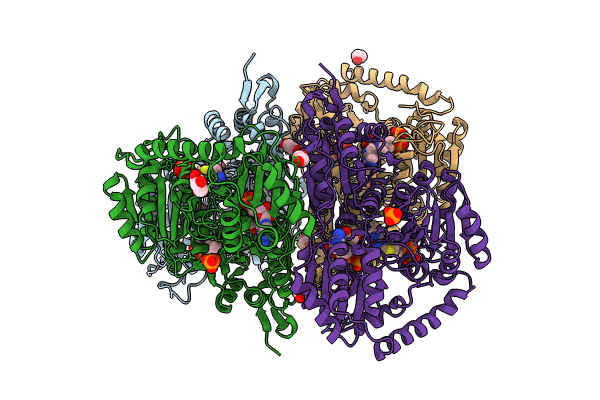
Deposition Date
2024-02-11
Release Date
2024-10-02
Last Version Date
2024-10-02
Entry Detail
PDB ID:
8VZH
Keywords:
Title:
Crystal Structure of 2-Hydroxyacyl-CoA lyase/synthase TbHACS from Thermoflexaceae bacterium in the Complex with THDP and ADP
Biological Source:
Source Organism:
Thermoflexaceae bacterium (Taxon ID: 2739507)
Host Organism:
Method Details:
Experimental Method:
Resolution:
2.25 Å
R-Value Free:
0.19
R-Value Work:
0.15
R-Value Observed:
0.16
Space Group:
P 21 21 21


